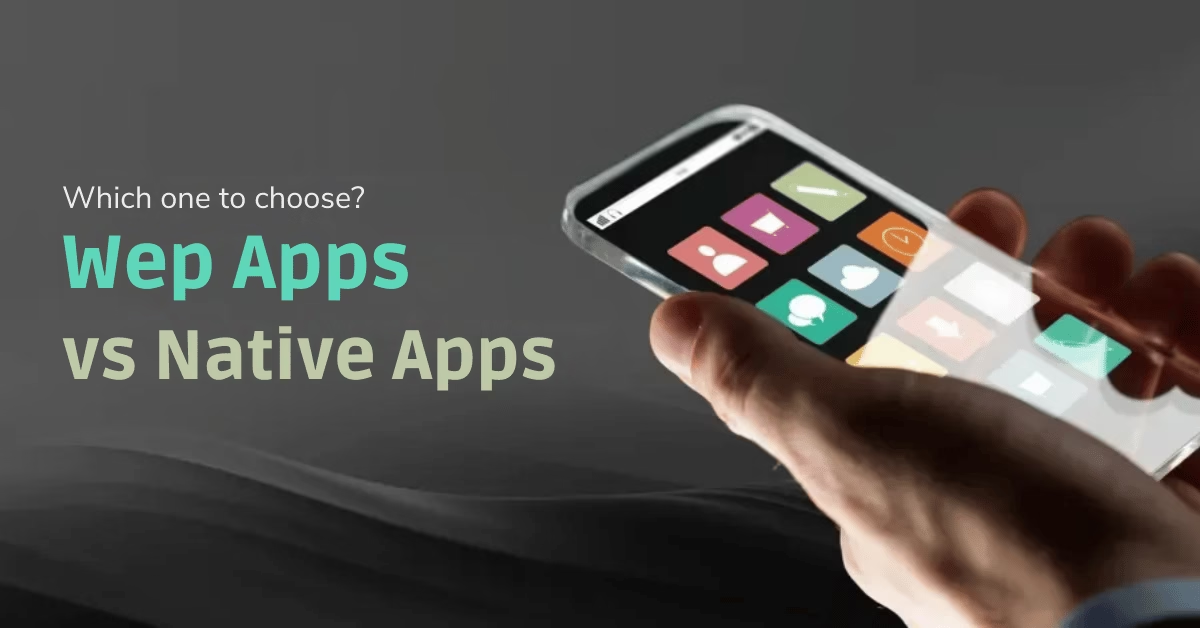The discussion around Web Apps vs Native development is one of the most important decisions businesses face in 2025. With users demanding speed, accessibility, and seamless experiences, companies must decide whether to prioritize native apps, web apps, or hybrid options. The choice doesn’t just influence technology—it directly affects ROI, performance, scalability, and long-term growth.
This guide explores both Native vs Web Apps, their strengths, weaknesses, and the specific use cases where each shines. By the end, you’ll know how to make the right decision for your business goals without wasting valuable resources.
Why the Web Apps vs Native Debate Matters
In today’s digital ecosystem, poor app performance is unforgiving. Studies show that more than 70% of users abandon apps that don’t meet expectations within the first week. Building the wrong type of app can lead to lost customers, higher churn, and unnecessary expenses.
When considering Web Apps vs Native, the goal should be aligning the app type with your business objectives. Native apps are known for performance and hardware integration, while web apps win in accessibility and cost-effectiveness. Choosing correctly ensures sustainable growth, scalability, and user satisfaction.
What is a Native App?
A native app is built specifically for a platform like iOS or Android using dedicated programming languages such as Swift, Objective-C, Kotlin, or Java.
Characteristics of Native Apps
- Optimized for device performance and smooth user experience
- Can fully access hardware features like camera, GPS, and push notifications
- Provide offline functionality and high reliability
- Require higher investment as separate apps must be developed for iOS and Android
What is a Web App?
A web app is delivered via a browser and works across devices without requiring installation from an app store. They are built with web technologies like HTML, CSS, and JavaScript.
If you want to explore more about how Progressive Web Apps are bridging the gap between websites and mobile applications, you can read Google’s guide to PWAs for technical insights and case studies.
Characteristics of Web Apps
- Accessible across platforms with one codebase
- Faster and more cost-efficient to develop
- Limited access to device hardware compared to native apps
- Require internet connectivity unless upgraded to Progressive Web Apps (PWAs)
Web Apps vs Native: Direct Comparison
| Feature | Native Apps | Web Apps |
|---|---|---|
| Performance | High | Moderate |
| Development Cost | Higher | Lower |
| Time to Market | Longer | Faster |
| Hardware Integration | Full | Limited |
| Offline Support | Strong | Weak (except PWAs) |
| UX/UI Quality | Excellent | Basic to Good |
This comparison shows why the Native vs Web Apps decision requires clear alignment with your business case.
Best Use Cases for Native Apps
Native apps deliver the best results where performance, security, or advanced functionality are critical.
Gaming Applications
Mobile games require maximum processing power, offline support, and integration with hardware features like graphics acceleration.
Fintech and Banking Apps
Apps in banking or financial services need strong compliance, security, and encryption. Native apps are better suited for handling sensitive data.
Augmented Reality (AR) and Virtual Reality (VR)
AR and VR apps depend on device-level performance, making native the only viable choice.
High-Traffic Social Media Platforms
Social networks like Instagram and TikTok rely on real-time engagement, smooth video playback, and notifications, all optimized by native frameworks.
Best Use Cases for Web Apps
Web apps are excellent for businesses focused on reach, affordability, and quick updates.
E-Commerce Platforms
Web apps let users browse and shop instantly without app store downloads, improving accessibility.
SaaS Products
Collaboration tools such as Trello and Asana (web versions) allow teams to work across devices effortlessly.
Content and News Publishers
Media outlets often prefer web apps for easier updates and wider audience reach.
MVPs for Startups
Launching as a web app helps startups validate ideas quickly before investing in native builds. Many startups also rely on Cost-Efficient Infrastructure for Growing Apps to scale reliably, optimize performance, and reduce infrastructure costs.
Native vs Web Apps: The Hybrid Middle Ground
Sometimes, neither approach alone fits perfectly. Hybrid frameworks and Progressive Web Apps (PWAs) combine the strengths of both.
Progressive Web Apps (PWAs)
PWAs behave like native apps while still being browser-based. They support offline use, push notifications, and app-like UX.
Cross-Platform Frameworks
Frameworks like React Native or Flutter allow developers to build apps from a single codebase for both iOS and Android while retaining near-native performance.
Hybrid approaches are great for startups and mid-sized businesses balancing performance with cost.
Factors to Consider When Choosing Web Apps vs Native
Target Audience
If your users are spread across multiple devices, web apps may be more efficient. For platform-specific audiences, native is stronger.
Budget Constraints
Web apps are cost-efficient upfront, while native apps require larger investments but deliver premium performance.
Time to Market
Web apps launch faster, making them ideal for MVPs or businesses racing competitors.
Security Needs
Apps in healthcare, fintech, and government sectors often require native apps due to stricter compliance standards.
Offline Functionality
If offline access is critical, native apps are the more reliable choice.
Industry Examples of Web Apps vs Native
Uber (Native)
Uber depends on real-time GPS tracking, notifications, and payments, all supported better in a native environment.
Spotify (Hybrid)
Spotify mixes native performance with web-based features for scalability and efficiency.
Pinterest (PWA)
Pinterest adopted a PWA to provide app-like experiences across devices while keeping accessibility high.
Web Apps vs Native: Long-Term Scalability
Native apps require higher maintenance but allow more precise performance scaling. Web apps scale faster because updates happen centrally, though performance may lag as traffic grows.
Startups often start with web apps and later invest in native apps as their user base expands. Large enterprises typically blend strategies depending on different markets and use cases.
Advanced Trends Influencing Web Apps vs Native
Edge Computing
Processing data closer to users reduces latency, benefiting both web and native apps.
AI-Driven Personalization
Native apps leverage device-level AI features, while web apps integrate cloud-based personalization tools.
Cloud-Native Architectures
Web apps increasingly depend on cloud-native services for scalability without inflating costs.
FAQs
Native apps perform better since they access device hardware directly, while web apps rely on browser performance.
PWAs combine strengths of both but still lack deep hardware integration. They are a smart choice for cost efficiency.
Native apps are costlier as they require separate development for iOS and Android. Web apps are cheaper with one codebase.
Most web apps can’t, unless built as PWAs with offline caching capabilities.
When they prioritize performance, security, and long-term scalability over upfront costs and speed to market.












